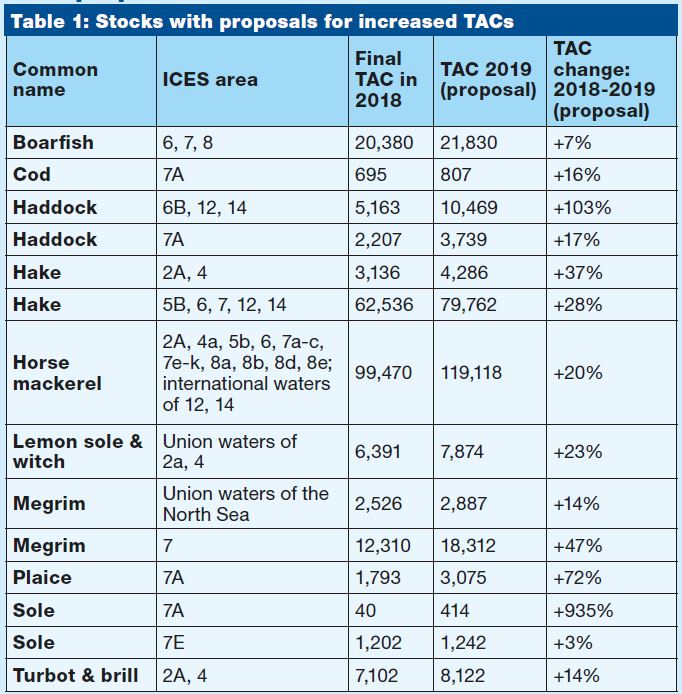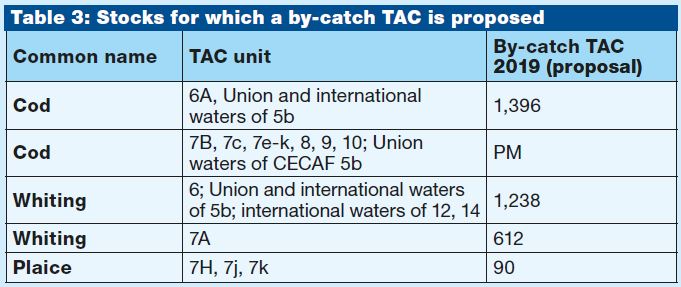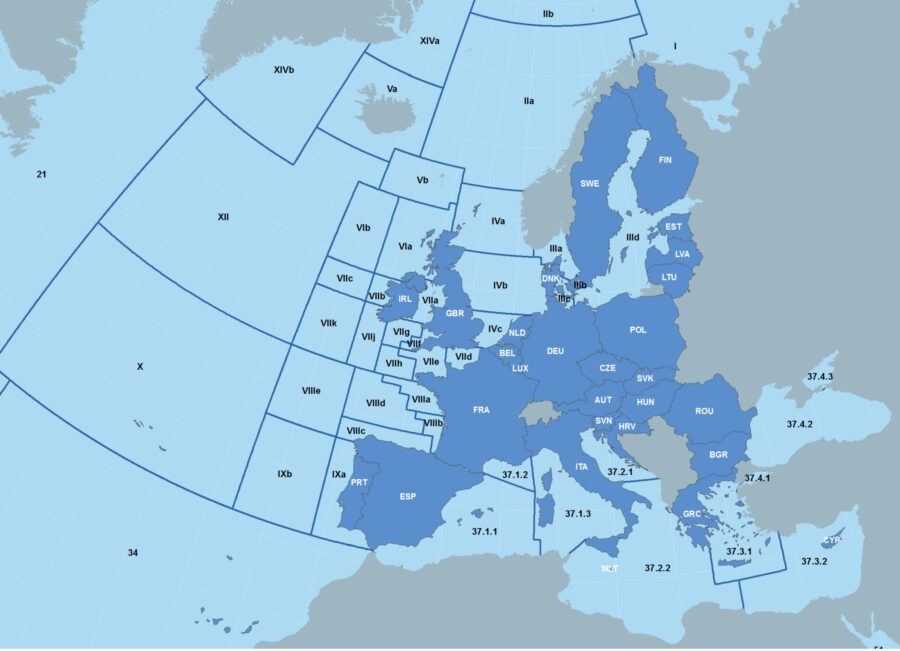Gains and losses in 2019 TAC proposals
Proposed TACs for 2019 show increases for 27 of the 89 stocks involved, 35 to stay the same, and decreases for 22 stocks, reports Tim Oliver
Of the main stocks of interest to UK and Irish fishermen, there are increases in 14 stocks and cuts in 13. Of the stocks pencilled in for cuts, five are for zero TACs, but the Commission is proposing small by-catch quotas for these stocks. (See Table 3)
The proposals, published last week, cover stocks managed by the EU alone. They do not include the North Sea stocks shared with Norway. International negotiations for some stocks are ongoing, and some stocks are awaiting scientific advice.
Final TACs and quotas will be decided at the Fisheries Council on 17-18 December – the last one the UK will attend as an EU member state, before Brexit on 29 March next year.
The Commission notes that the landing obligation will come fully into force from 1 January, 2019, meaning that ‘all catches of regulated commercial species taken onboard (including by-catch) are to be landed and counted against each member state’s respective quotas’.
In its TAC proposals, the previously discarded or unwanted catches are included in the total TAC. Amounts corresponding to the agreed exemptions to the landing obligation – eg species with high survival rates – from the advised catches are deducted from the TACs.
Brussels says 53 stocks are now fished at MSY levels, compared with only five in 2009 and 44 in 2017. It aims to reach MSY for all stocks by 2020.
EU fisheries commissioner Karmenu Vella said: “Next year will be a milestone year for European fisheries. Our collective duty is to ensure a good transition to the full landing obligation as of 1 January, 2019, while continuing our progress towards achieving sustainable (MSY) fishing by 2020. With this proposal, the Commission puts forward concrete solutions to advance on both fronts.”
Increases
Of stocks where increases are proposed, notable rises are 37% for North Sea hake and 28% for western hake – stocks that have been noted as potential choke species.
A doubling of the Rockall haddock TAC is proposed, along with a 17% increase in Irish Sea haddock and 16% in Irish Sea cod. The Irish Sea also benefits from a proposed huge 935% increase in sole, up from 40t to 414t, and an increase in plaice, up 72%.
There is also a big proposed increase in Bristol Channel and Celtic Sea (7fg) plaice, up 215%, and Area 7 megrim, up 47%. North Sea megrim is also up 14%, and North Sea turbot and brill are in line for a 14% increase.
On the pelagic front, there is a 20% increase for western horse mackerel. (See Table 1)
Cuts
The most significant cuts for UK and Irish fishermen are zero TACs for West of Scotland cod and whiting, Area 7 cod (except 7d, Eastern Channel), Irish Sea whiting, and Southwest of Ireland and Southern Celtic Sea (7hjk) plaice. But while these stocks cannot be targeted, the Commission is proposing small by-catch allowances (see Table 3). However, these by-catches are subject to conditions and full catch documentation.
Other cuts include 7% for North Sea prawns, 14% for Area 7 haddock (except Irish Sea), 22% for North Sea sole, 26% for 7d sole, and 9% for Bristol Channel sole.
For pelagic catchers, there is a 53% cut in Celtic Sea and Southwest of Ireland (7ghjk) herring. (See Table 2)
Apart from the shared stocks with Norway, stocks for which figures are still awaited include North Sea and west coast of Scotland monkfish, west coast haddock, Irish Sea prawns, Area 7b-k whiting, skates and rays in all areas, and Area 7de undulate ray. (See Table 4)
Bass
The Commission is proposing catch limits (not TACs), following the latest scientific advice. The limit is set at 1,789t, up from 880t in 2018, and higher catches are proposed for hook and line fisheries – 7t per vessel (5t in 2018). The ‘bag limit’ for recreational fisheries is extended to one fish per day for seven months, up from only three months in 2018.
There is no indication from the Commission as to whether bass will be a discards ban species. A decision will have to be made at the December Council.
UK industry leaders were due to meet the UK fisheries minister and CEFAS representatives on Thursday this week (15 November) to discuss the proposals and priorities for the December Council.
‘Serious choke risks’
Commenting on the proposals, NFFO chief executive Barrie Deas said they suggest that the Commission has recognised that some important compromises will be necessary – for example, on the MSY timetable – if the landing obligation is to be accommodated.
“But it is unlikely that even with these compromises, all serious choke risks can be eliminated by decisions taken at the December Council,” he said. “There are also some signs of ‘pass the parcel’ from the Commission to member states.
“We will be analysing the proposals and preparing our representations to UK fisheries minister George Eustice, recognising that this will be the last December Council that the UK will participate in as a member state.”
Bertie Armstrong, SFF chief executive, commented: “Overall, the picture of fish stocks is reassuringly healthy. As always, some stocks require attention, and putting sustainability front and centre, the Scottish industry is fully prepared to work with government to do whatever is necessary to find solutions.
“This will be the last negotiating round with the UK as a full member state of the EU. We look forward eagerly to assuming the rights and responsibilities of an independent coastal state, with sovereignty over some of the best fishing grounds in the world.”
Main proposed 2019 TACs for UK and Irish fishermen












